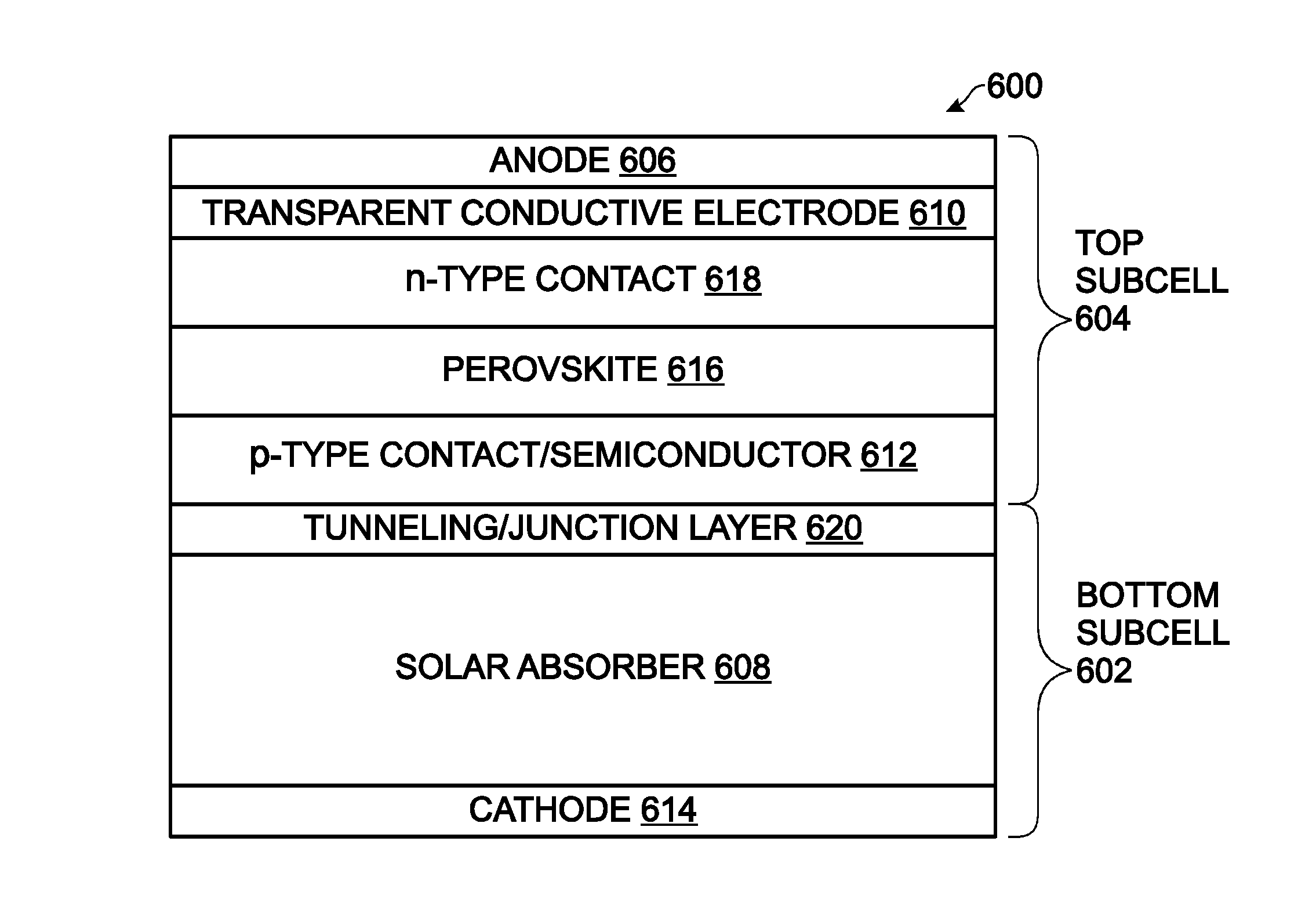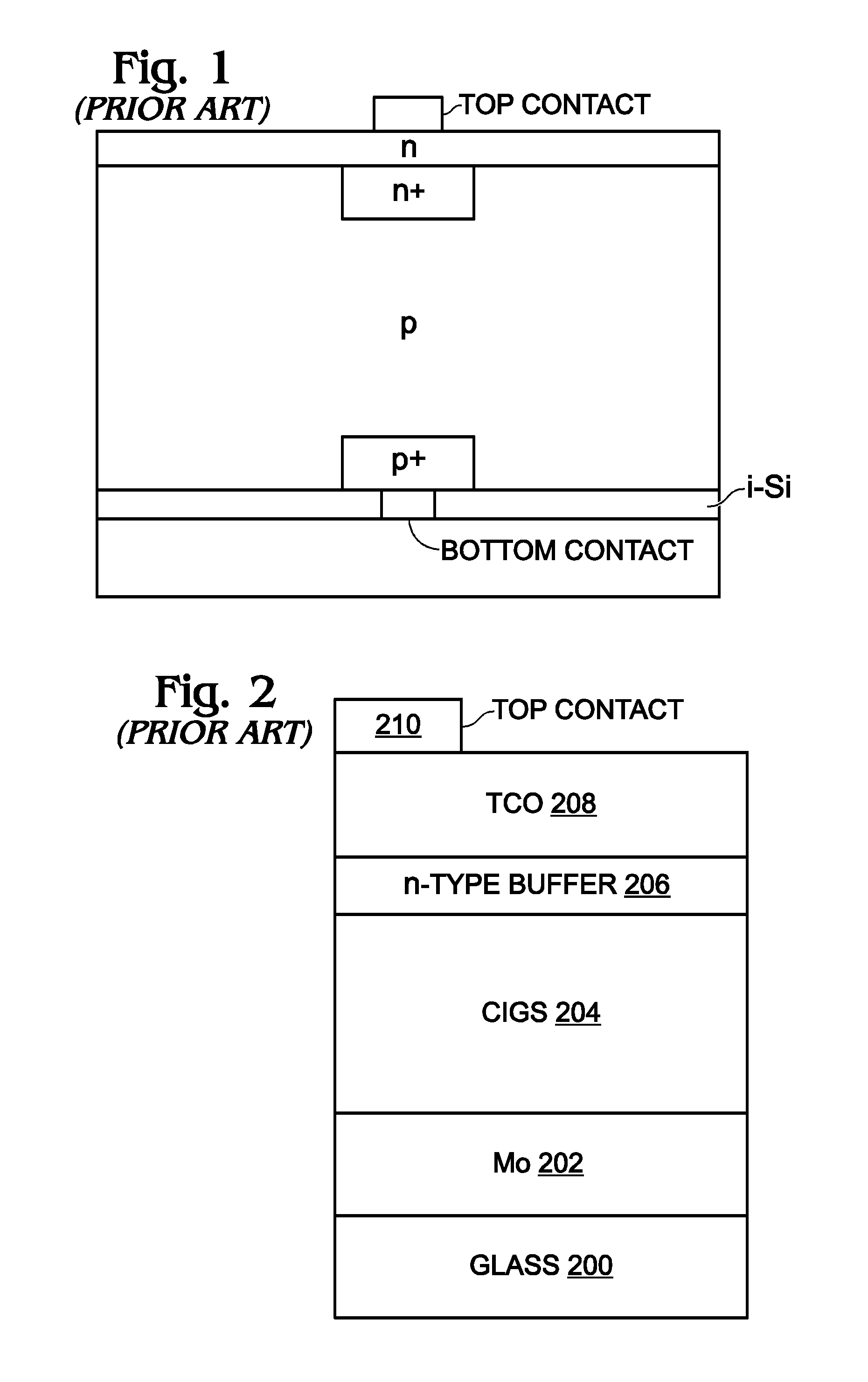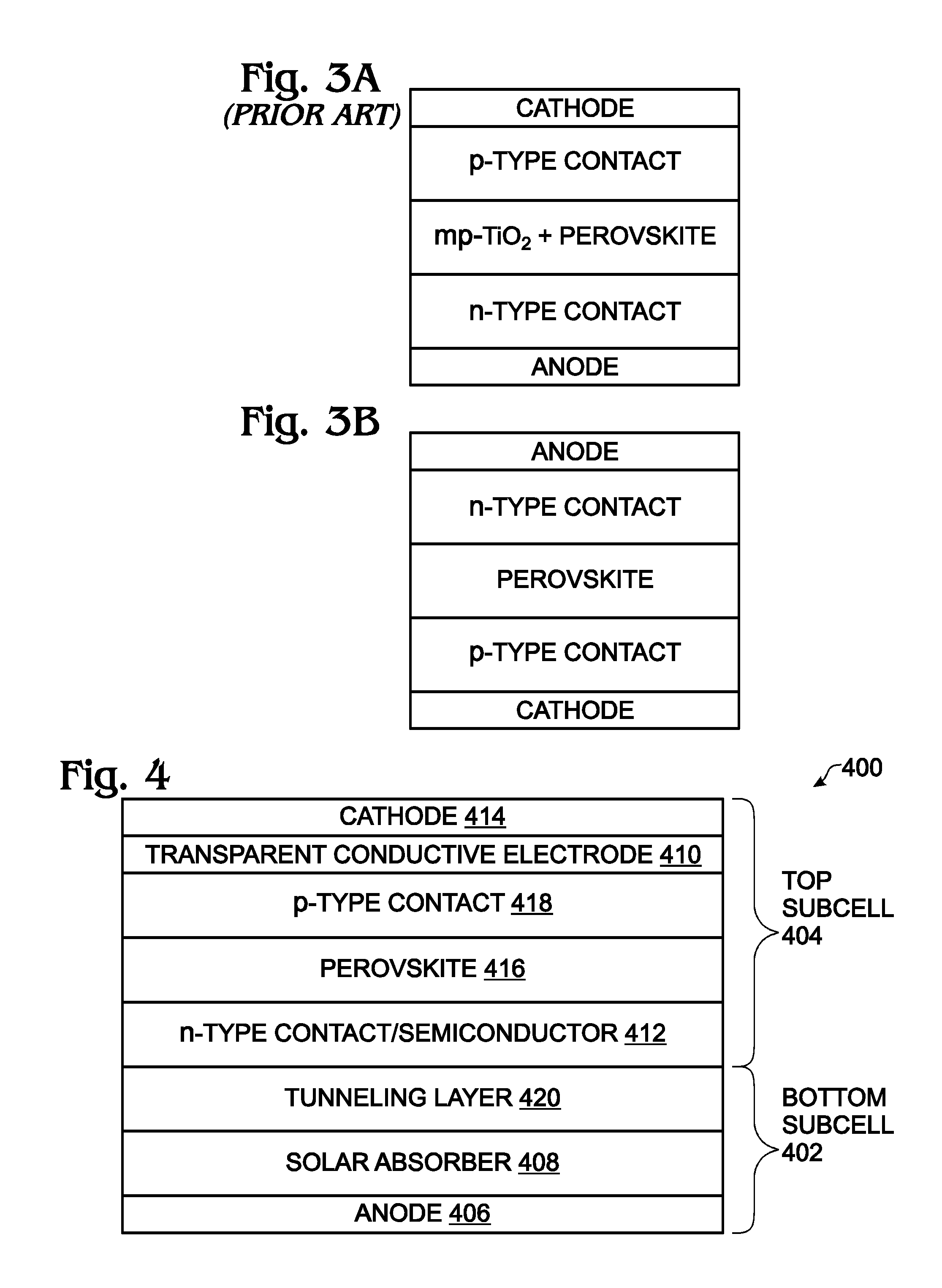Hybrid Perovskite with Adjustable Bandgap
a technology of perovskite and bandgap, which is applied in the field of hybrid perovskite materials, can solve the problems of mixed halogenides, mixed halogenides approach usually does not demonstrate good performance in solar devices, and the cost of increasing complexity and manufacturing pri
- Summary
- Abstract
- Description
- Claims
- Application Information
AI Technical Summary
Benefits of technology
Problems solved by technology
Method used
Image
Examples
Embodiment Construction
[0033]As used herein, perovskite is a material with the same structure as calcium titanate (CaTiO3), or ABX3. The B cation is in 6-fold coordination forming an octahedron, while A cations occupy interstitial spaces and exhibit 12-fold coordination.
[0034]A semiconductor is a material whose conductivity, due to charges of both signs, is normally in the range between that of metals and insulators and in which the electric charge carrier density can be changed by external means.
[0035]N-type semiconductors have a larger electron concentration than hole concentration. The phrase ‘n-type’ comes from the negative charge of the electron. In n-type semiconductors, electrons are the majority carriers and holes are the minority carriers. N-type semiconductors are created by doping an intrinsic semiconductor with donor impurities. In an n-type semiconductor, the Fermi level is greater than that of the intrinsic semiconductor and lies closer to the conduction band than the valence band.
[0036]As o...
PUM
 Login to View More
Login to View More Abstract
Description
Claims
Application Information
 Login to View More
Login to View More - R&D
- Intellectual Property
- Life Sciences
- Materials
- Tech Scout
- Unparalleled Data Quality
- Higher Quality Content
- 60% Fewer Hallucinations
Browse by: Latest US Patents, China's latest patents, Technical Efficacy Thesaurus, Application Domain, Technology Topic, Popular Technical Reports.
© 2025 PatSnap. All rights reserved.Legal|Privacy policy|Modern Slavery Act Transparency Statement|Sitemap|About US| Contact US: help@patsnap.com



